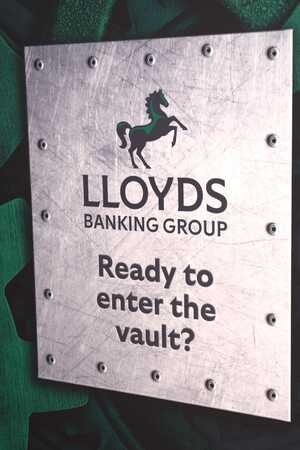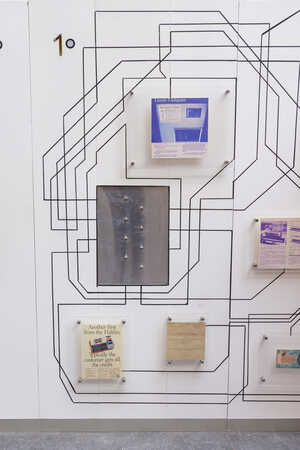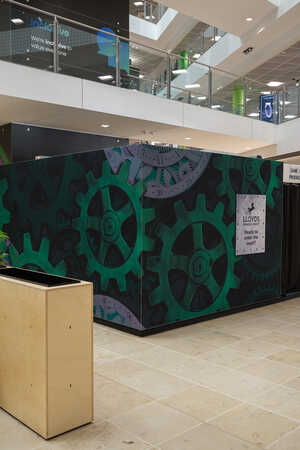Our Escape Room brand experiences are a complex, multidimensional discipline.
From the initial brief, we are required to not only understand a client’s objectives but to anticipate their needs, create puzzles and mechanics that align with learning outcomes, and – critically – ensure the final experience remains engaging and fun.
A recent project, titled The Lloyds Data Vault, exemplified these challenges. The Escape Room was designed as an educational piece on Lloyds’ data value chain and the history of data within the bank. This experience also had the added requirement of needing to be both autonomous and self-resetting, as well as being fully portable – capable of being dismantled, transported, and reassembled at four different locations over the course of a year.
This blog will delve into the details on how we brought this one-of-a-kind activation to life…

Discovery and concept development
As with most projects, our process began with stakeholder meetings to unpack the brief. These conversations rarely yield concrete specifications – instead, they allow us to absorb unspoken expectations and align with the client’s tone and priorities. Understanding the dynamics of the team – whether they are playful, detail-focused, or time-sensitive – helps shape every decision going forward.
Initial ideation was done using 3D modelling software to conceptualise a free-standing unit that respected strict limitations on size and mobility. Each wall of the 5m x 5m footprint was constructed as a 1 m-wide modular “flat” designed to house all puzzle components – monitors, switches, lights, and more. These flats connected via plug-and-play cables to a central pillar housing all electronic and PC components. This structure, reinforced by gantry-style connections, offered the durability necessary for frequent use while maintaining ease of assembly.

Game mechanics and automation
One of the more unique technical challenges was the client's request for a completely autonomous escape room – no games master, no manual reset. We responded by engineering puzzles that reset themselves and by building a system that automatically returned to its starting state after each session.
The result was a room that could operate continuously without staff intervention, offering scalability and efficiency without compromising the player experience.
Modular construction and finish
Construction began with traditional three-by-two CLS framing. To ensure repeatability and precision across the 20 modular flats, we developed a custom layout jig within our workshop. Although the structural template remained consistent, each flat contained different internal components – ranging from translucent backlit maps to embedded touchscreen displays. Every module was independently constructed and tested to allow for iterative refinement and client feedback.
To aid in transportability, the panels were skinned in lightweight 6mm MDF and finished with unique visual treatments depending on their theme – from a mottled 1940s green to modern white interiors. The external facade was finished with high-resolution printed fabric mounted on aluminium tracks, creating a polished, eye-catching look ideal for event environments.
Take a look inside the Lloyds Data Vault...

Multi-sensory design
Each puzzle incorporated several layers of interaction:
Functional interaction: Buttons, switches, touchpoints, or logic puzzles that form the core gameplay.
Theming: Visual design elements that set the scene – whether a spaceship console or a Victorian office.
Lighting & visual feedback: DMX-controlled lights provided both narrative cues and real-time feedback to player actions.
Audio design: Layered audio reinforced progress and immersion, from success/failure cues to ambient soundscapes.
On a macro level, lighting and sound were used to guide player focus and reinforce narrative transitions. In The Data Vault, these elements represented different eras in Lloyds' history, brought to life through custom audio narration and dramatic light sequences.

Final delivery
The result was a fully immersive, self-contained escape room experience that could be deployed repeatedly with minimal setup time. Designed for educational impact and operational efficiency, The Lloyds Data Vault exemplifies our approach: thoughtful design, technical precision, and creative storytelling.
This project presented a unique set of challenges, from the absence of a games master to the demand for full portability. But that’s exactly what we thrive on. At our core, we don’t just build puzzles – we solve them!


